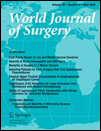Economic Valuation of the Global Burden of Cleft Disease Averted by a Large Cleft Charity
Abstract
Background
This study attempts to quantify the burden of disease averted through the global surgical work of a large cleft charity, and estimate the economic impact of this effort over a 10-year period.
Methods
Anonymized data of all primary cleft lip and cleft palate procedures in the Smile Train database were analyzed and disability-adjusted life years (DALYs) calculated using country-specific life expectancy tables, established disability weights, and estimated success of surgery and residual disability probabilities; multiple age weighting and discounting permutations were included. Averted DALYs were calculated and gross national income (GNI) per capita was then multiplied by averted DALYs to estimate economic gains.
Results
548,147 primary cleft procedures were performed in 83 countries between 2001 and 2011. 547,769 records contained complete data available for the study; 58 % were cleft lip and 42 % cleft palate. Averted DALYs ranged between 1.46 and 4.95 M. The mean economic impact ranged between USD 5510 and 50,634 per person. This corresponded to a global economic impact of between USD 3.0B and 27.7B USD, depending on the DALY and GNI values used. The estimated cost of providing these procedures based on an average reimbursement rate was USD 197M (0.7–6.6 % of the estimated impact).
Conclusions
The immense economic gain realized through procedures focused on a small proportion of the surgical burden of disease highlights the importance and cost-effectiveness of surgical treatment globally. This methodology can be applied to evaluate interventions for other conditions, and for evidence-based health care resource allocation.




